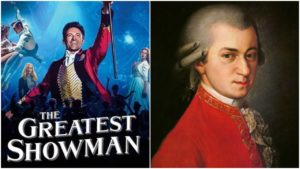
Opera Meets Film: How the ‘Così Fan Tutte’ Moment in ‘The Greatest Showman’ Is Emblematic of Film’s Structure
By David Salazar“Opera Meets Film” is a feature dedicated to exploring the way that opera has been employed in cinema. We will select a section or a film in its entirety, highlighting the impact that utilizing the operatic form or sections from an opera can alter our perception of a film that we are viewing. This week’s installment features “The Greatest Showman.”
“The Greatest Showman,” which stars Hugh Jackman, Michelle Williams, Zack Efron, and Zendaya, among others, is musical that traces the roots and development of P.T. Barnum as he builds his famous circus.
Being a musical, the connections with opera are obvious and this film in many ways feels far more operatic than a lot of other musical films – the musical set pieces dominate the entire film with the sections connecting them feeling drier even the most barren of baroque recitatives.
Part of this general feeling is this film’s rushed pacing, which is best exemplified in its brief operatic passage. After having managed to rise to the top and having purchased a mansion to demonstrate his great triumphs, Barnum gifts one of his daughters with ballerina slippers in a callback to an earlier desire she expressed in the film’s first act.
In the next shot, we cut to the young girl putting on the slippers and slowly starting to move around in them. Behind her is the opening of the overture to Mozart and Da Ponte’s “Così fan tutte.” The music of this overture builds in its introduction as it prepares for the energetic middle section and the camera, which follows Barnum’s daughter as she slowly builds her own dancing momentum and slides across the screen seems to be preparing us for a major dance number accompanied by the overture.
But then the editing transitions the dancing to a full on stage concert, the music dissolving to its final chords and then ending. Gone in a flash.
This moment, which tells the audience that Barnum’s daughter has taken on ballet, doesn’t take the time to show the audience much detail about this process. It isn’t a major plot point to be sure and serves as more of an appetizer for a bigger scene that the film has coming up, but it is emblematic of the film at large.
The Mozart’s music doesn’t get a chance to build at all, fizzling out before it has even gone anywhere. This is what happens with many of the film’s larger story points, which are rushed past, often keeping the film from generating true profundity in its characterizations.
This is not intended as a review, but simply a demonstration of how even the smallest and seemingly inconsequential choices in a film can in fact express larger structural makeup of the picture.
Categories
Opera Meets Film

